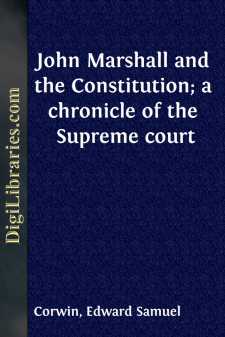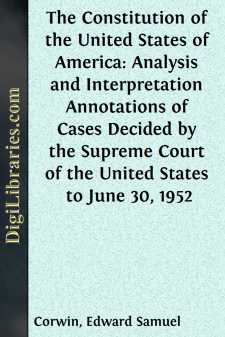Categories
- Antiques & Collectibles 13
- Architecture 36
- Art 48
- Bibles 22
- Biography & Autobiography 813
- Body, Mind & Spirit 142
- Business & Economics 28
- Children's Books 17
- Children's Fiction 14
- Computers 4
- Cooking 94
- Crafts & Hobbies 4
- Drama 346
- Education 46
- Family & Relationships 57
- Fiction 11829
- Games 19
- Gardening 17
- Health & Fitness 34
- History 1377
- House & Home 1
- Humor 147
- Juvenile Fiction 1873
- Juvenile Nonfiction 202
- Language Arts & Disciplines 88
- Law 16
- Literary Collections 686
- Literary Criticism 179
- Mathematics 13
- Medical 41
- Music 40
- Nature 179
- Non-Classifiable 1768
- Performing Arts 7
- Periodicals 1453
- Philosophy 64
- Photography 2
- Poetry 896
- Political Science 203
- Psychology 42
- Reference 154
- Religion 513
- Science 126
- Self-Help 84
- Social Science 81
- Sports & Recreation 34
- Study Aids 3
- Technology & Engineering 59
- Transportation 23
- Travel 463
- True Crime 29
Edward Samuel Corwin
Edward Samuel Corwin (1878–1963) was an influential American political scientist and constitutional law scholar. He was a professor at Princeton University, where he made significant contributions to the study of American constitutional interpretation and political theory. Among his notable works are "The Constitution and What It Means Today" and "Twilight of the Supreme Court," where he analyzed the role of the U.S. Supreme Court in American governance. Corwin's writings helped shape modern understandings of the Constitution, particularly concerning the separation of powers and judicial review.
Author's Books:
Sort by:
CHAPTER I. The Establishment Of The National Judiciary The monarch of ancient times mingled the functions of priest and judge. It is therefore not altogether surprising that even today a judicial system should be stamped with a certain resemblance to an ecclesiastical hierarchy. If the Church of the Middle Ages was "an army encamped on the soil of Christendom, with its outposts everywhere, subject...
more...
INTRODUCTION It is my purpose in this Introduction to the Constitution of the United States, Annotated to sketch rapidly certain outstanding phases of the Supreme Court's interpretation of the Constitution for the illustration they may afford of the interests, ideas, and contingencies which have from time to time influenced the Court in this still supremely important area of its powers and of the...
more...



